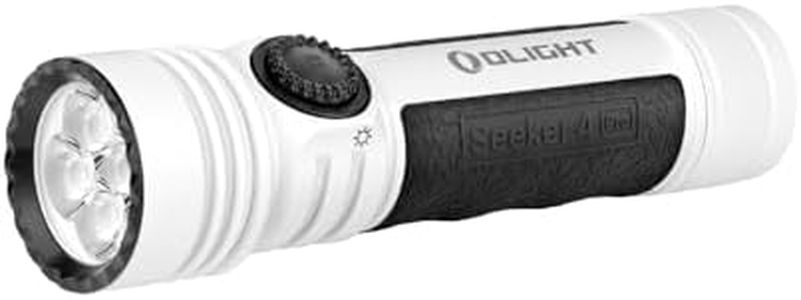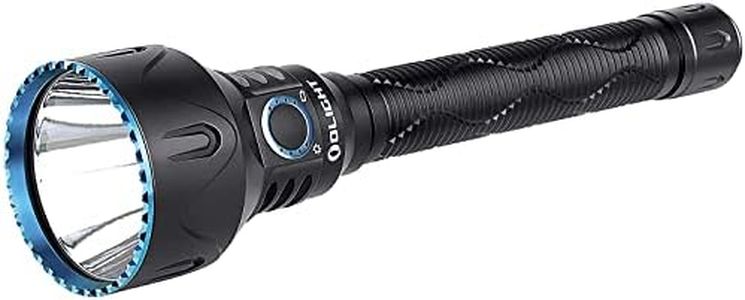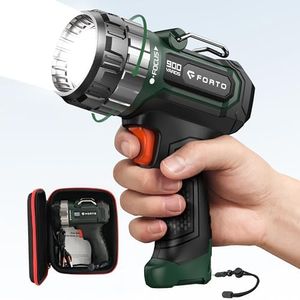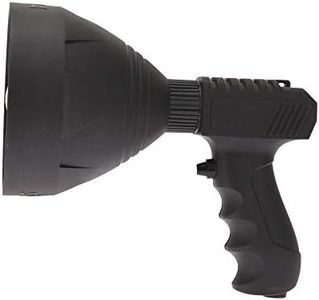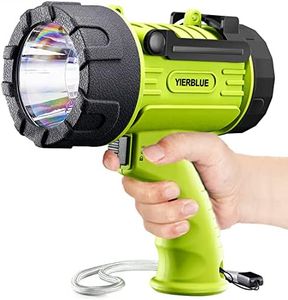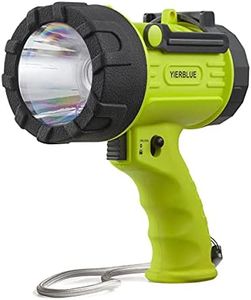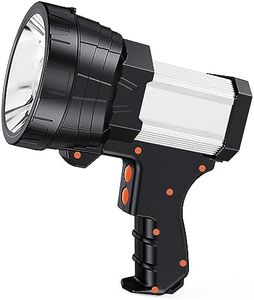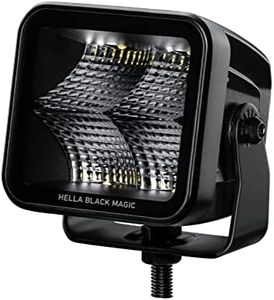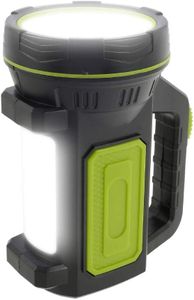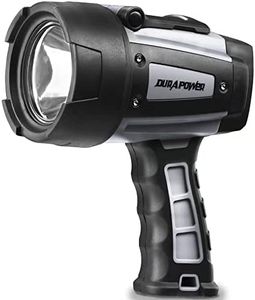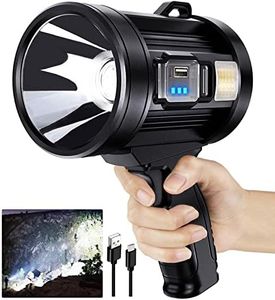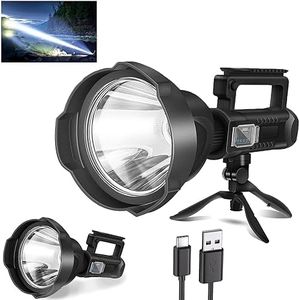We Use CookiesWe use cookies to enhance the security, performance,
functionality and for analytical and promotional activities. By continuing to browse this site you
are agreeing to our privacy policy
10 Best Spotlights For Hunting
From leading brands and best sellers available on the web.Buying Guide for the Best Spotlights For Hunting
When shopping for a spotlight for hunting, it’s important to think about how and where you’ll use it. Spotlights are crucial for spotting game at night, finding your way in the dark, or tracking animals after sunset. A good spotlight should make tasks easier without being overly bulky or difficult to use. Think about whether you’ll be on foot, in a vehicle, or staying in one place, as this can affect which features are most important for you. Always factor in how comfortable it is to hold, how you’ll charge or power it, and how well it fits with your hunting style.Brightness (Lumens)Brightness, measured in lumens, indicates how strong the light beam will be. Higher lumens mean a brighter and more powerful beam, which can be useful for seeing longer distances or lighting up wide areas. Spotlights can range from around 500 lumens for simple close-up tasks to above 3000 lumens for long-range spotting. If you’re mainly using your spotlight for close work or tracking in thick brush, a lower lumen count is usually sufficient and helps save battery. If you need to see across fields or large open spaces, higher lumens will provide better visibility. Think about your typical hunting environment to decide how much brightness is right for you.
Beam DistanceBeam distance shows how far the light can reach. A longer beam distance helps you spot animals or landmarks far away, while a shorter distance is better for up-close work. Spotlights may have a focused, narrow beam for distance or a wider, flood-style beam for area illumination. For hunting in open fields or if you need to scan large distances, look for a longer beam throw; if you’re mainly in forests or dense brush, a shorter and wider beam is often more useful. Matching the beam distance to your environment will help you see what you need without overwhelming your field of view.
Power Source (Battery Type)Spotlights can be powered by rechargeable batteries, disposable batteries, or even connected to a vehicle’s power source. Rechargeable batteries are cost-effective and convenient, especially for regular use, but keeping them charged is essential. Disposable batteries are good for extended trips without charging options but mean carrying spares and dealing with waste. Some spotlights offer both options or can be plugged into a car for added flexibility. Consider how long you’ll be out, access to electricity, and your preferences for convenience when choosing the right power option.
Run TimeRun time tells you how long the spotlight will stay on before it needs recharging or new batteries. It’s usually listed for different brightness settings, with lower settings lasting much longer than the brightest modes. Longer run times are especially important for overnight hunts or long tracking sessions. If you need short bursts of high power, a shorter run time may be okay, but if you’ll be relying on your light for long periods, look for models that last longer or allow quick swapping of batteries. Think about how long your typical hunting activity lasts and whether you’ll have a chance to recharge to guide your choice.
Durability and Weather ResistanceHunting often means dealing with rough conditions, so a spotlight should be tough and able to handle drops, moisture, and dirt. Durability is often indicated by rugged construction and materials like tough plastics or metal, and some models are rated as water-resistant or waterproof (look for IP ratings). If you hunt in wet or harsh climates, a more weatherproof and sturdy spotlight is a must. For casual use or dry weather, less rugged options can work. Matching the build quality to your hunting style ensures your spotlight won’t fail when you need it most.
Size and WeightThe size and weight of a spotlight can affect how comfortable it is to carry and use for extended periods. Larger spotlights often offer more brightness and longer run time, but can be heavy and bulky, which might be tiring if you’re on foot. Compact spotlights are easier to carry but may compromise on battery life or output. If you’re mainly hunting from a vehicle, a larger spotlight is usually fine, but for foot hunters or those who pack light, a smaller and lighter model is more practical. Think about how and where you’ll use the spotlight to find the right balance.
